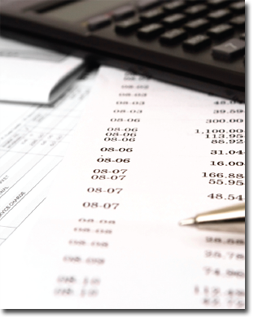What is a Mortgage?
A mortgage is made up of
two parts: principal and
interest. Principal is
the actual amount
borrowed. Interest is
the lender's fee you are
charged for borrowing.
You'll have to decide on
an amortization period
(the length of time it
will take to completely
pay off the mortgage)
and the term, or length
of time each mortgage
agreement guarantees the
interest rate.
Before you go to a
financial institution or
mortgage broker, keep in
mind that there are many
mortgage options
available. Shop around
for the best rates and
the best terms.
Negotiate. Everyone
wants your business, but
it's up to you to look
after your interests. Of
course, the key thing to
remember is to negotiate
a mortgage that fits
into your lifestyle, and
doesn't take over your
life! Your mortgage
broker can help guide
you through this process
and supply you with
information.

Amount of the Mortgage
With lower interest
rates, you may qualify
for a larger mortgage
because your monthly
payments will be lower.
But always keep in mind
that the larger your
mortgage, the more
interest you'll pay in
the long run. That
simply means your house
will cost more. Also,
what if interest rates
rise? Will you still be
able to carry the
payments comfortably?
Down Payments
Before considering any
mortgage, consider your
down payment. If you're
a qualified home buyer,
you can purchase a house
with a minimum 5% down
payment. On a $160,000
home that would be an
$8,000 down payment,
leaving you with a
$152,000 mortgage.
Assuming you negotiate
an interest rate of 8%
for your mortgage,
you're monthly payment
for principal's interest
would be $1160. Now
let's say you decide o
wait until you save
another $10,000 before
you buy because you
think the bigger down
payment will lower your
monthly payments. Well,
at 8%, putting $10,000
more down on your house
will only save you
$76.32 per month, you
might be better off
saving $10,000 for a
rainy day or a vacation
or that hot tub you've
been dreaming about.
With today's interest
rates, it just doesn't
make sense to tie up
your cash to save
$76.32. You might be
better off putting your
extra money to work for
you in another
investment with a higher
rate of return.
Conventional and High
Ratio Mortgages
To qualify for a
conventional mortgage,
you simply have to have
a 25% down payment of
the purchase price, with
the mortgage not
exceeding 75% of the
appraised value. If your
down payment is less
than 25%, then you
qualify for a high-ratio
mortgage. This type of
mortgage requires loan
insurance, which can
cost an additional 0.5%
to 3.75% of the mortgage
amount. With this type
of mortgage you could
also be limited to a
maximum house price.
Pre-Approved Loans
Obtaining a Pre-Approved
Mortgage
Why go house hunting
only to find that you
don't qualify for a
mortgage on the dream
home you've found?
Having a pre-approved
mortgage will give you
the confidence of
knowing exactly what you
can spend on a home
before you start
looking. You will also
be protected against
interest-rate increases
while you look for your
new home.
Once you've done your
homework and shopped for
the best rate, meet with
the loans officer to
arrange a pre-approved
mortgage and discuss the
features you're looking
for to tailor payments
to your needs. It could
take a few days, but
give your lending
institution about two
weeks. It will eliminate
potential headaches down
the road.
Pre-Approved Mortgage
Features to Look For
1. Competitive
interest rates. You may
be willing to pay a
little more to get the
flexible features you
desire.
2. A 90-day rate
guarantee. This will
protect you against
rising interest rates
while allowing you to
take advantage of
falling rates.
3.
Flexible payment
options. These enable
you to tailor the
mortgage to your
lifestyle. Discuss
payment frequency and
lump-sum payment
options. Find out if
your lending institution
will allow you to skip a
payment in special
circumstances or
double-up on your
payments.
4. Closing
Costs: ask about the
lender's policy with
respect to realty tax
Read More ->
|